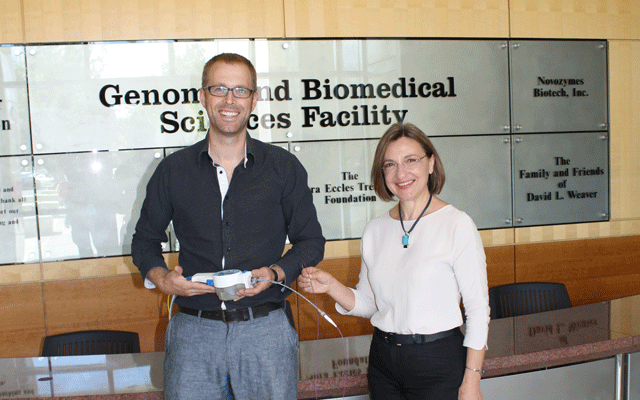
In Scientific Reports, a Nature publication, Julien Bec (Department of Biomedical Engineering, University of California Davis, Davis, USA) and others write that the combination of intravascular imaging (IVUS) and multispectral fluorescence lifetime imaging (FLIm), in a single catheter, enabled label-free simultaneous assessment of morphological and biochemical features of coronary vessels in vivo (in a swine model).
Cardiovascular News spoke to study senior author and head of the Biophotonics Laboratory Laura Marcu (Department of Biomedical Engineering, University of California Davis, Davis, USA) about the FLIm-IVUS system.
What are the limitations of intravascular imaging modalities for the assessment of coronary plaque?
Overall, no single existing imaging modality enables a complete assessment of the plaque pathophysiology—i.e, no system provides information that encompasses a combination of biochemical, structural and functional features of arterial vessels. To address this challenge, hybrid imaging is currently being actively investigated. This includes dual-probe catheters that enable simultaneous assessment of plaque pathophysiology by two different imaging techniques. For example, as in our study, using FLIm to provide information about biochemistry and using IVUS to provide information about morphology. Other combinations that have been explored include: IVUS and near-infrared spectroscopy (NIRS); IVUS and optical coherence tomography (OCT); IVUS and near infrared fluorescence (NIRF); OCT and NIRF; and OCT and NIRS.
What were the key findings of your study?
Our study demonstrated for the first time that FLIm and IVUS can be integrated in a tiny catheter able to navigate through and to interrogate narrow coronary vessels in a living heart. Integration of FLIm with IVUS can improve the diagnostic ability of IVUS—the most widely used intravascular imaging technique in cardiology—and create new paradigms for the diagnosis and management of atherosclerotic cardiovascular disease. Cardiovascular disease is the number one cause of death in the USA and western world overall.
What further studies are needed in this area?
We need to demonstrate the ability of this bimodal technique to assess plaques in human patients during intravascular procedures. For this, we first need to obtain the FDA approval to use our catheters in patients.












